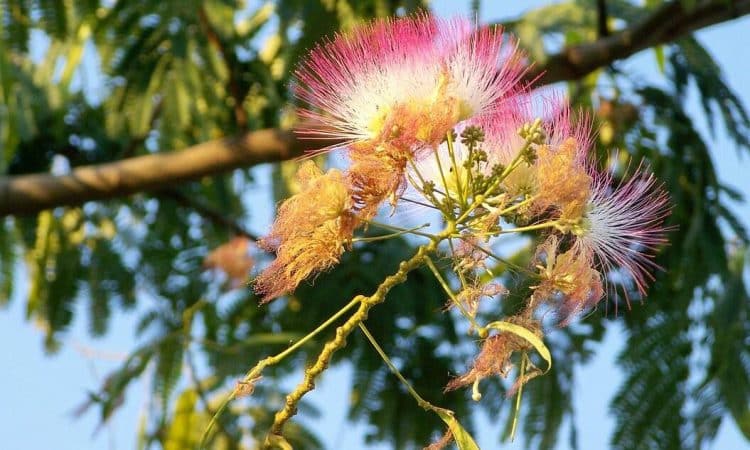
I would like to plant a silk wattle in my garden. What kind of place do you prefer? What should I look out for when growing it?
The silk acacia is a very special looking ornamental tree, much loved for its pink flowers and special leaves. Itis native to eastern and southern Asia, but its beauty has made it popular almost all over the world.
It has an umbrella-shaped crown and can grow to a height of 6-10 metres, providing good shade for your garden. Its leaves are double-winged, bright green, turning yellow in autumn. Its leaves have the special property of closing at night and opening again at dawn. The flowers open at the end of the shoots, pink in colour, with a fluffy appearance. The flowers bloom in waves from June to autumn, and in addition to their showy appearance, they also have a pleasant, mild fragrance. Its bean pod-like fruits decorate the garden from autumn, growing up to 15-20 cm long.
It prefers a sunny, dry place and nutrient-rich soil. Planting it in a sheltered area is the only way to ensure that it will not be damaged by the winter. Young specimens can even be grown in pots and overwintered indoors in cooler conditions. It is advisable to water young trees frequently and to cover the thorns during the winter. Flowering can usually be expected from the 4th year onwards, and thetrees will reach their final height within a few years due to their rapid growth. The silk acacias tolerate pruning well and can be pruned if necessary, pruning off any woody parts that are too long and obstructing, but they can also grow a beautiful crown without external intervention.
When you’re taking care of the tree, it’s good to keep an eye on its plant protection. Silk acacias can cause a lot of trouble for the tree and its owner. It can cause massive sucking of leafminers, leaf yellowing, and even major leaf drop. They also make honeydew, which can drip from the tree in large quantities and contaminate garden areas under the tree, such as garden furniture and walkways. To prevent this damage, treat trees with an oil-based wash in both autumn and spring. Pests may already be present on trees when the foliage emerges, so if the pest is a regular problem, start chemical treatment with something like Mospilan or NeemAzal.

